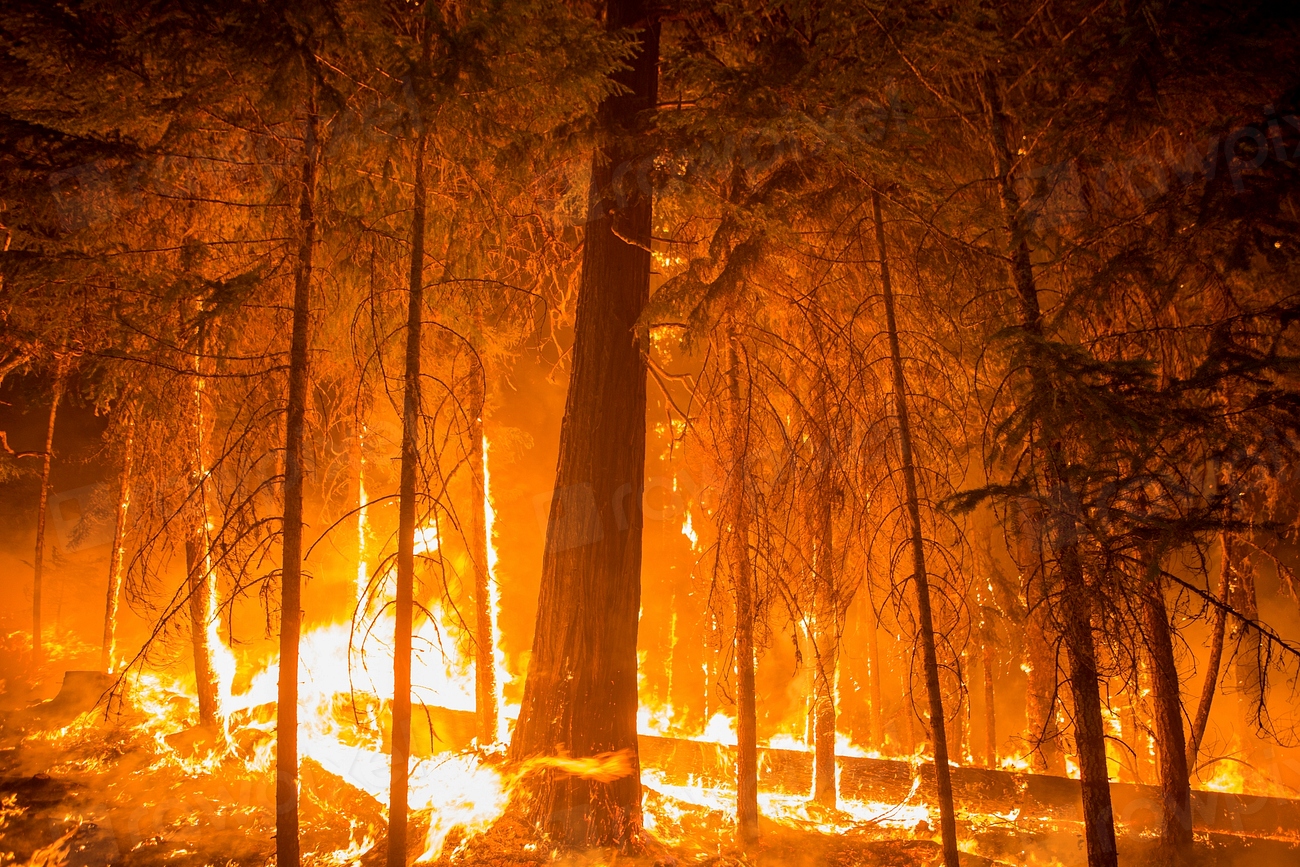Jammu and Kashmir has recorded the highest number of forest fires in India over the past week, making it a major concern for environmentalists and authorities. According to official data compiled by ETV Bharat, a staggering 172 forest fires have been reported in the Union Territory since June 4. These include 159 alerts from the MODIS satellite system and 13 from SNPP-VIIRS, both advanced satellite monitoring tools used by the Forest Survey of India (FSI) to track wildfires.
Following Jammu and Kashmir in wildfire incidents are Madhya Pradesh (138), Chhattisgarh (76), Odisha (73), and Uttarakhand (63).
The Science Behind the Surge
Forest officials attribute this sharp increase to the ongoing summer season, which is widely recognized as the peak forest fire period. The heat causes the forest floor’s dry leaf litter to become highly combustible. According to Suresh Kumar Gupta, Principal Chief Conservator of Forests, these are mostly ground fires—which affect the forest floor—rather than crown fires, which damage the treetops and are generally more destructive.
Meteorologist Sonam Lotus explains that the heatwave sweeping the region, with temperatures surpassing 33°C in Kashmir and soaring to 44°C in Jammu, has severely dried out moisture levels, making the region highly susceptible to wildfires.
Human Activities Fueling the Flames
Authorities have identified human activity—such as lighting fires for cooking or discarding cigarette butts—as a major trigger for these wildfires. Despite the installation of over 140 fire control rooms, response teams face difficulty in accessing the hostile, mountainous terrain where many fires break out.
The forest department has marked four forest divisions—three in Jammu and one in Kashmir—as “highly vulnerable” to wildfires.
Community Involvement in Firefighting Efforts
In one notable incident in April, when a fire broke out in the Pir Panjal mountains, forest department workers and villagers had to battle the blaze manually. A forest department employee recalled using mosque loudspeakers to rally 60 villagers to help beat the flames using twigs and rakes, but the fire could only be extinguished by unexpected rainfall.
This incident highlights the lack of infrastructure and resources needed to fight fires effectively in remote, forested areas.
Massive Damage to Jammu and Kashmir’s Forests
The damage is significant. In 2024 alone, Jammu and Kashmir have reported 1,250 forest fire incidents, impacting 3,503 hectares of forest land. This is double the number of fires reported in 2023, which stood at 600 and affected less than 1,000 hectares.
One of the worst-hit regions is Kokernag, known for its 7,000 hectares of dense deodar and pine forests, where the fires consumed vast tracts of flora.
Climate Change and Precipitation Deficits
An official report from the Forest Department attributes the spike in wildfires to a mild winter and insufficient snowfall, which failed to retain ground moisture. From December to February, Kashmir received 75% less rainfall than normal, causing streams and rivers to dry up and previously unaffected areas to become fire-prone.
Long-Term Impact on Biodiversity and Ecosystems
According to World Forest Watch, Jammu and Kashmir have lost 952 hectares of tree cover between 2001 and 2023. Experts like Professor Akhlaq Amin Wani from Sher-e-Kashmir University of Agricultural Sciences and Technology stress the irreversible damage wildfires cause to ground flora like herbs and shrubs. These often fail to regenerate, leading to a permanent loss of biodiversity.
Professor Wani warns that wildfires can also exhaust essential nutrients like nitrogen and carbon from the soil, leaving it infertile and barren.
Human-Wildlife Conflict on the Rise
One of the overlooked consequences of wildfires is the displacement of wildlife. As forests burn, animals are forced to move toward human settlements in search of food. Government records indicate 32 deaths and 269 injuries caused by wildlife encounters in the last two years alone.
Read also: Rising Forest Fires in Jammu and Kashmir: A Growing Environmental Concern
Proposed Preventive Measures
Experts and forest officials recommend urgent steps to reduce the fire risk:
- Removal of dry leaf litter and debris
- Creation of fire rings in sensitive zones
- Reforestation of burned areas
- Conducting vulnerability assessments for early prevention
- Strengthening the rapid response system
However, funding gaps continue to hamper progress. Despite allocating ₹727.66 crore under CAMPA (Compensatory Afforestation Fund Management and Planning Authority), the funds remained unutilized in the last fiscal year. This issue was flagged by Chief Secretary Atal Dulloo during the 25th Forest Committee meeting, where he proposed 2,061 km of firelines for wildfire prevention.
Health Hazards and Air Pollution
Apart from environmental damage, the smoke from these wildfires is severely impacting public health. Villagers have complained of sore throats, eye irritation, and breathing issues due to the acrid smoke blanketing the region.
A study published in Springer Nature, titled “Wildfires under Changing Climate and Their Environmental and Health Impacts,” highlights that wildfires release harmful pollutants including carbon monoxide, PM2.5, and polycyclic aromatic hydrocarbons, leading to severe respiratory problems.
A resident from south Kashmir’s Kokernag region shared:
“The smoke hung heavy for days. We couldn’t breathe properly until the rain cleared the air.”
Jammu and Kashmir’s rising forest fire cases are a clear indicator of the urgent need for proactive forest management, climate resilience planning, and community participation. The Union Territory must now focus on:
- Utilizing allocated funds effectively
- Equipping ground teams with better tools
- Educating locals on fire prevention
- Investing in early warning systems
Without immediate action, these recurring wildfires will continue to threaten biodiversity, human health, and climate stability in the fragile Himalayan ecosystem.
















